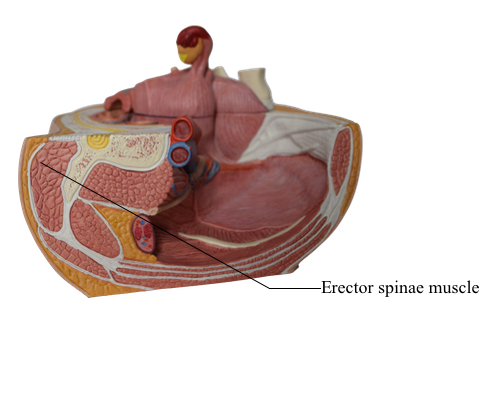Main Model

64 Erector spinae muscle

The massive erector spinae muscles lie in a “groove” on each side of the vertebral column between the spinous processes centrally and the angles of the ribs laterally. The erector spinae are the chief extensors of the vertebral column and are divided into three columns: The iliocostalis forms the lateral column, the longissimus forms the intermediate column, and the spinalis forms the medial column. Each column is divided regionally into three parts according to the superior attachments (e.g., iliocostalis lumborum, iliocostalis thoracis, and iliocostalis cervicis). The common origin of the three erector spinae columns is through a broad tendon that attaches inferiorly to the posterior part of the iliac crest, the posterior aspect of the sacrum, the sacro-iliac ligaments, and the sacral and inferior lumbar spinous processes.
The erector spinae are often referred to as the “long muscles” of the back. In general, they are dynamic (motion-producing) muscles, acting bilaterally to extend (straighten) the flexed trunk.